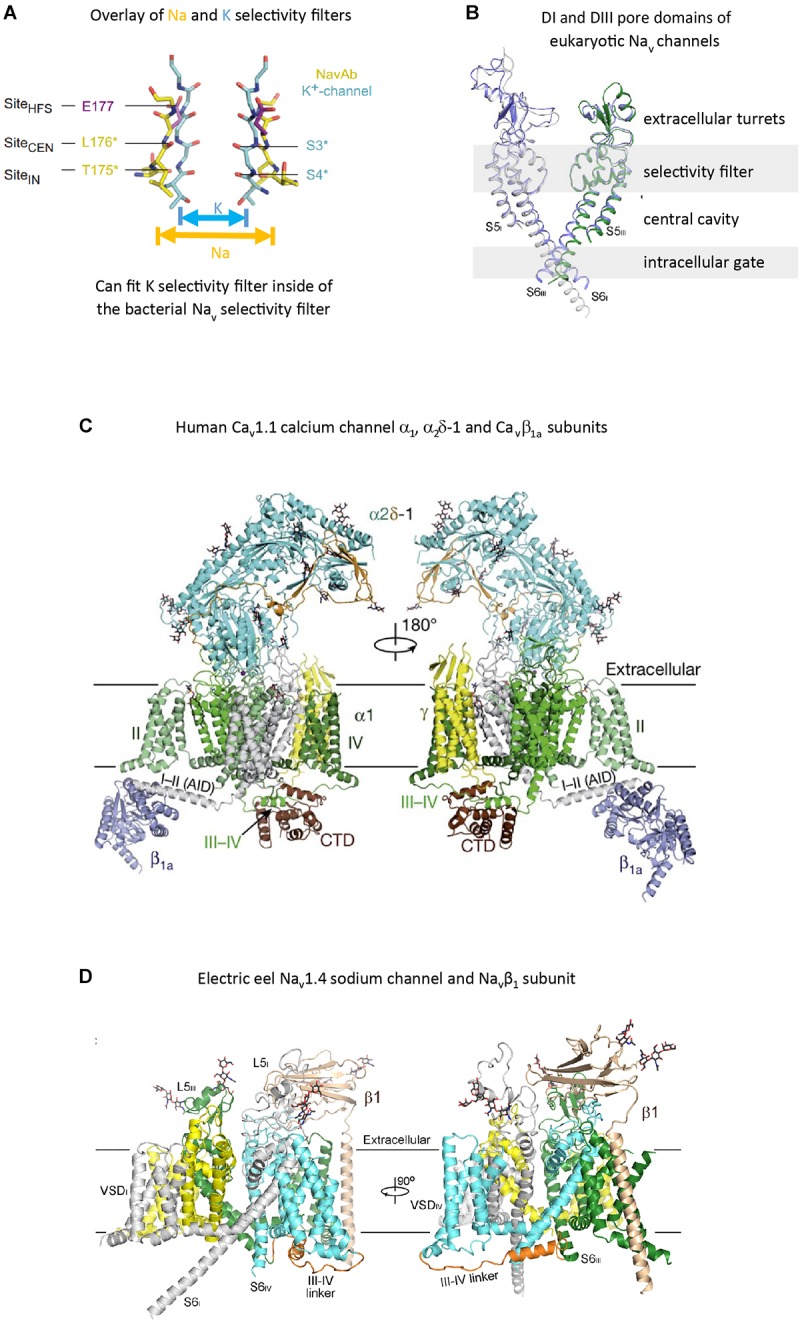FIGURE 3.

High resolution structures of pore selectivity filters, a pore domain and full length voltage gated calcium and sodium channels. (A) Overlay of the structure of the pore selectivity filter of bacterial KcsA potassium channel (Doyle et al., 1998) and bacterial sodium channel NavAb (Payandeh et al., 2012). Only two subunits are shown for clarity. Backbone carbonyls in the selectivity filter are red. The narrower pore selectivity filter for potassium ions fits within the broader selectivity filter for sodium (or calcium) ions. (B) Overlay of Domain I and III pores of arthropod Nav1 and electric eel Nav1.4. Key amino acid side chain residues of the selectivity filter project into the pore center to regulate ion passage through sodium and calcium channels pores. Long extensive extracellular turrets rising from segment 5 to the pore selectivity filter, and shorter extensions from the pore selectivity filter to segment 6 project rise above the membrane, serving as a first contact for incoming ions and drugs, before passing through the selectivity filter below. (C) α1 subunit of the human Cav1.1 calcium channel, illustrating the extended extracellular turret loops of L5I, L5III, L6IV and the intracellular globular domain formed by the III-IV linker and the proximal C-terminal Domain (CTD) containing the calmodulin binding IQ motif. The proximal C-terminus omitted in the right panel to better illustrate the III–IV linker. Accessory α2Δ-1 and β1A subunits are illustrated with the pore-forming α1 subunit. Potential Ca2+ ions in the selectivity filter vestibule are illustrated as green spheres. (D) The structure of the electric eel Nav1.4 (each domain individually colored) and β1(wheat colored) complex, with glycosyl moieties shown as black sticks. The short cytoplasmic III-IV linker (orange color) regulates fast inactivation of Nav1 channels. (A) reproduced from Payandeh, et al (2011). Nature, 10:475(7356):353-8 with permission. (B,D) reproduced from Yan et al. (2017). (C) reproduced from J Wu et al. (2016).
